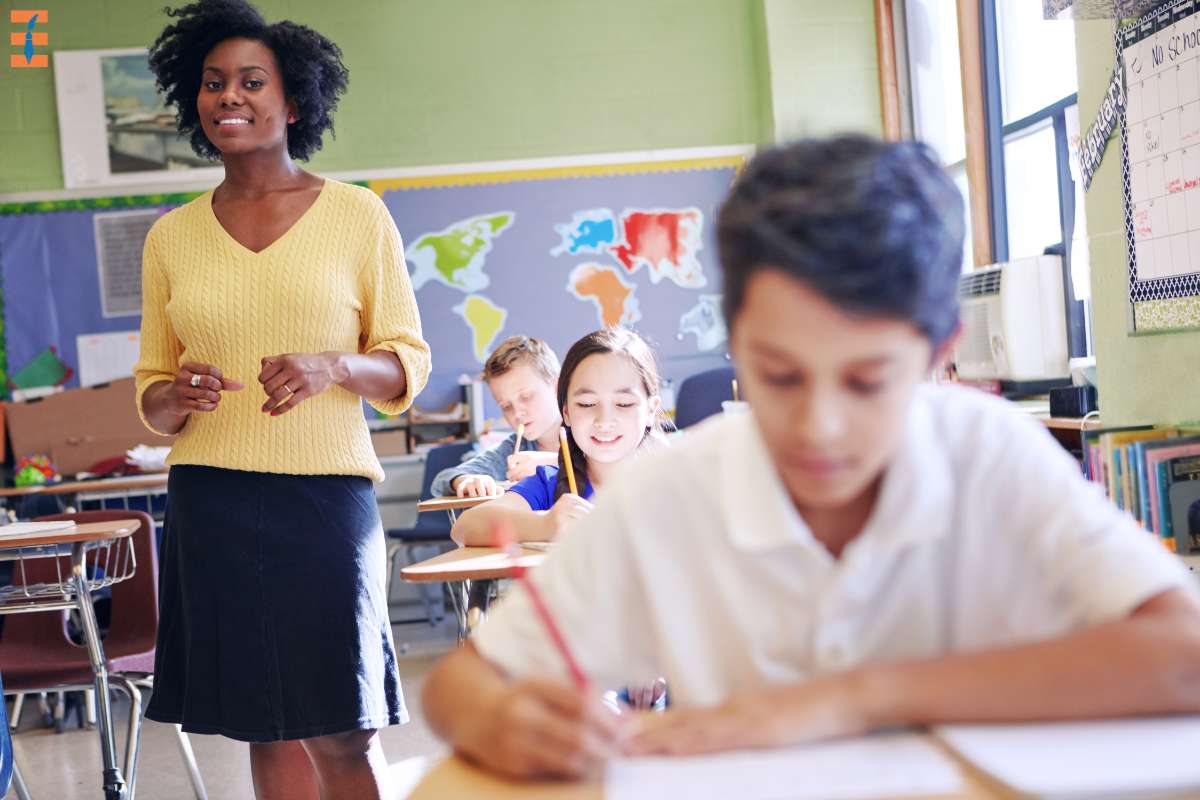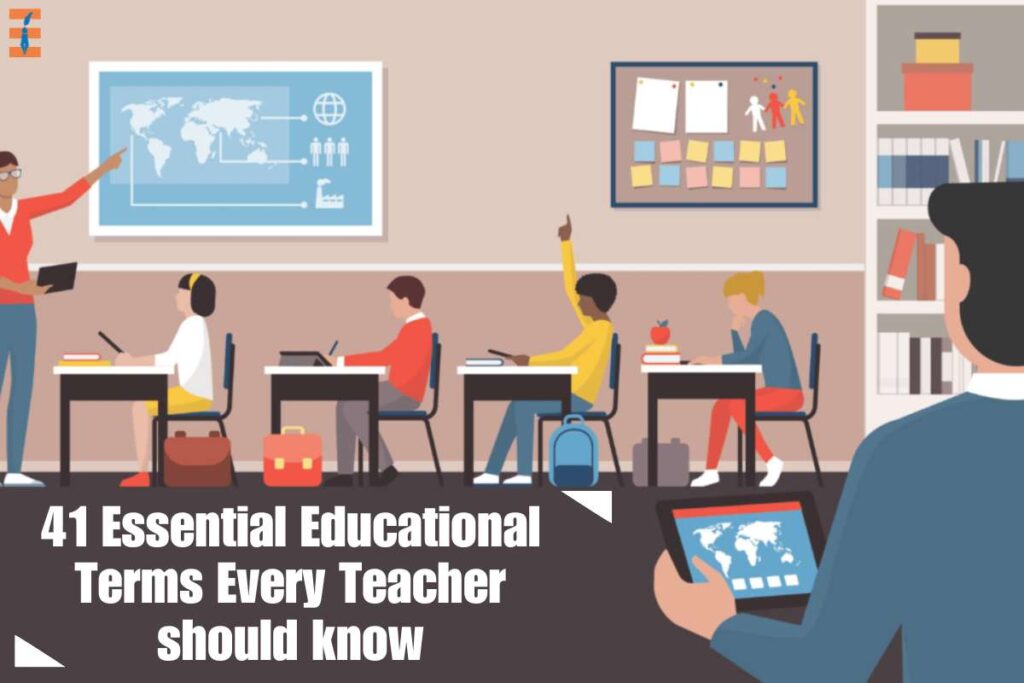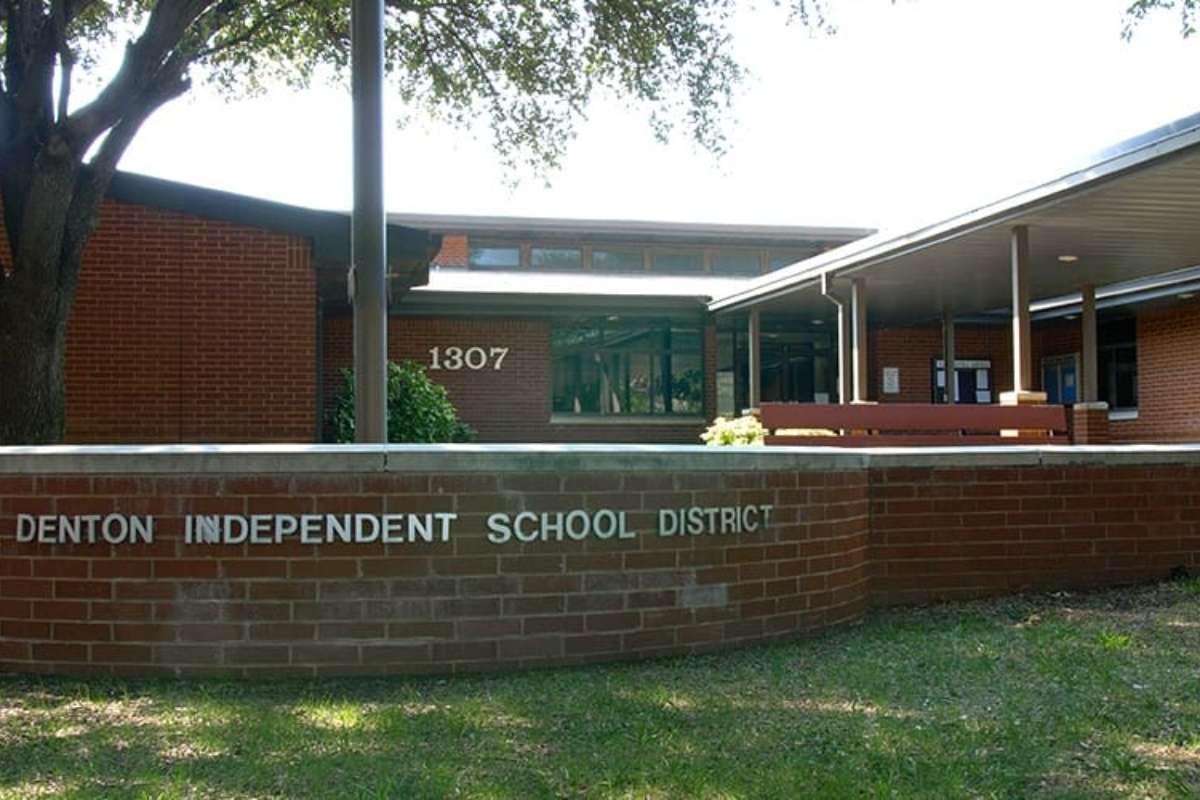As you pursue a professional career in the field of education, you will certainly be required to acquire a large number of educational terms. Whether you are an aspiring educator or a parent who will engage with instructors, it is necessary to familiarize yourself with the teaching terminology. Such words can create a good communication bond between a teacher and a student. In this article, you will be reading about educational terms that will help an educator or a teacher to build a healthy relationship with students. They are totally student-oriented and reflect effective professional development for teachers.
Here are 41 educational terms every teacher should know:
1. Alternative Assessment:
It is also known as professional assessment which requires the completion of a task rather than multiple or fill-in-the-blank questions. Alternative assessment is the most popular educational term among teachers as it goes beyond traditional ways of teaching and evaluates student learning. It focuses on real-world application, performance, and demonstration of skills and knowledge of students.
2. Evaluation:
Evaluation in the field of educational terms is about investigating or assessing the knowledge of students after teaching a particular concept. It helps teachers to identify gaps in learning and improve accountability from the teacher’s side. Evaluation of the syllabus and learning concepts is the easiest way to gain feedback from the process of teaching as well as learning.
3. Authentic Assessment:
It demands the performance of a task to show the knowledge or competence of students. In the ways of educational terms, the authentic assessment provides higher order of thinking to engage pupils in meaningful learning that develops crucial skills. Moreover, it grants the golden opportunity for teachers for individual assessments and showcases their unique capabilities through teaching.
4. Balanced Reading:
It is the most crucial educational term that combines intensive phonics and full language. Balanced reading promotes comprehensive skill development, individualized instruction, language, and literacy development, authentic reading experiences, reading motivation and engagement, teacher-student interaction, etc.
5. Direct Teaching:
It is an effective technique to introduce new concepts to students that include intensive small-group instruction with a prescribed set of materials. Direct teaching is a strong foundation of literacy skills in the subject of mathematics, science, etc. Furthermore, such type of educational terms helps educators to frame active student engagement and decide clear learning objectives.
6. Enrichment:

Enrichment contributes to students’ personal growth and development and frames self-confidence, leadership qualities, self-esteem, etc among them. It allows students to make connections across interdisciplinary fields that can provide them with advanced and challenging learning opportunities.
7. Fine Motor Skills:
Fine Motor Skills require the use of the tiniest muscles for extremely modest coordinated motions. The activities included in it often involve sensory experiences that stimulate the integration of sensory information. They support students’ managing skills for everyday tasks and raise their concentration levels.
8. Gross Motor Skills:
They require the use of the biggest muscles for significant movements such as walking or running. These kinds of educational terms explain the importance of lifelong habits of physical activities that can instill a positive attitude towards exercise. They support essential performing physical activities to increase strength and stamina.
9. High-Stakes Tests:
They test pupils at certain grade levels to check whether they are reaching the criteria since they can influence instructional practices in schools. However, can contribute to educational disparities and the achievement gap. The outcomes of high-stakes tests can have significant consequences for students and hence they can create stressful situations for them.
10. IQ:
IQ in educational terms is a measurement of a person’s capacity for learning. It is a tool to measure a person’s cognitive abilities or intellectual potential that can be used as an educational term to assess an individual’s intellectual aptitude and to make comparisons between individuals or groups.
11. Inference:
Inference is the process of drawing conclusions or making interpretations based on available information, evidence, or data. It involves using critical thinking skills to analyze, synthesize, and make reasoned judgments about educational content, concepts, and situations. Inference can help teachers reach a conclusion based on the facts provided.
12. Learning Styles:
Everyone has unique learning styles, including tactile, auditory, and visual. There are different ways through which individuals can learn and process information. The right approach toward understanding different learning preferences can be useful for educators to provide diverse instructional strategies and support students’ individual needs.
13. Mainstreaming:

Children with special needs attend meals, assemblies, and certain lessons with the rest of the students. It refers to the practice of including students with disabilities or special educational needs in regular or mainstream educational settings alongside their non-disabled peers. It is also known as inclusion or inclusive education.
14. Norm-Referenced Tests:
Such kinds of tests generate scores for comparing students of comparable ages and grade levels. They compare an individual’s performance to a norm or reference group. These tests are designed to provide information about how an individual’s performance or ability compares to a larger population of students who have taken the same test under similar conditions.
15. Open-ended activities:
In such activities, there is no proper solution or several methods to discover it. They refer to tasks, assignments, or projects that do not have a predetermined or single correct answer or solution. These educational terms encourage students to think critically, problem-solve, and engage in creative and divergent thinking. Open-ended activities promote student-centered learning, exploration, and the development of higher-order thinking skills.
16. Phonics:
It is the process of learning to read by sounding out words. Phonics, in educational terms, refers to the method of teaching reading and spelling by focusing on the relationship between sounds (phonemes) and the letters that represent them (graphemes). Phonics instruction helps students develop the skills to decode words, recognize letter-sound patterns, and apply these skills in reading and spelling.
17. Portfolio Evaluation:
It is the evaluation of a set of activities or projects over time. In educational terms, it refers to the assessment method that involves the systematic collection, review, and analysis of students’ work samples, artifacts, and demonstrations of learning over a period of time. It focuses on evaluating students’ progress, growth, and achievement based on a collection of their best work, rather than relying solely on traditional tests or exams.
18. Professional Development:
It refers to classes, seminars, or workshops aimed at recertifying teachers. Professional development, in educational terms, refers to activities and programs that aim to enhance the knowledge, skills, and expertise of educators. It is a continuous learning process that supports teachers, administrators, and other education professionals in improving their instructional practices, staying updated with current research and trends, and meeting the evolving needs of students.
19. Remediation:
It is about re-teaching skills that the youngster did not grasp during normal classroom training. Remediation, in educational terms, refers to the process of providing targeted and intensive support to students who are struggling academically or who have specific learning needs. It aims to address gaps in knowledge, skills, or understanding, and help students reach grade-level expectations or achieve their educational goals.
20. Rubric:
In educational terms, a rubric refers to a scoring or grading tool that provides a systematic and standardized way to evaluate student performance or work. It consists of a set of criteria and descriptors that define different levels of performance, allowing educators to assess and provide feedback in a consistent and transparent manner.
21. Standardized Tests:
Standardized tests, in educational terms, are assessments that are administered and scored in a consistent, uniform manner to ensure a standardized and comparable measure of student performance. While opinions on standardized testing vary, these exams are administered across a district, state, or country.
22. Visual Discrimination:
It is the ability of the eye to distinguish between letter variances. Visual discrimination in educational terms refers to the ability to perceive and differentiate visual stimuli based on their distinct features such as shape, size, color, position, and pattern. It plays a significant role in various aspects of learning and academic performance.
23. Whole Language Immersion:
Whole Language Immersion is an educational approach that aims to develop proficiency in a second language by immersing students in a language-rich environment. In whole language immersion programs, the target language becomes the primary medium of instruction for academic content across various subjects.
24. Community-based instruction:
In Community-based learning, students’ education goes beyond the typical classroom to include engagement with, and even immersion in, real-world communities and surroundings whose traits, challenges, and/or interests are pertinent to the topic at hand.
25. Meditational reading practice:

Contemplative reading happens when a reader absorbs a book more thoroughly than if he or she were only reading for informational purposes. The purpose of contemplative reading is to get a better comprehension of what, how, and why the book conveys the information it does.
26. Course assessment:
A course assessment is a paper or digital questionnaire that needs a written or chosen answer to a series of questions in order to evaluate the teaching of a certain course. It is a typical method for generating relevant feedback that the instructor and school may utilize to enhance the quality of education.
27. Course redesign:
Redesigning a course such that it has tangible and quantifiable objectives that correspond with teaching methodologies and evaluation procedures is course redesign. It is suggested that you use tactics that promote active learning and monitor student progress so that you may assist students who need it.
28. Synthesizing information:
It refers to using pieces from diverse learning experiences to make sense of a situation or increase comprehension. You can see Vanderbilt’s Bloom’s Taxonomy guide. These assessments are administered and scored in a consistent, uniform manner to ensure a standardized and comparable measure of student performance.
29. Implicit knowledge:
Tacit knowledge is information that has become entrenched, and functional, and does not attract attention. A person with tacit knowledge in an area will often be unaware of what they know (what they once had to learn). Implicit knowledge helps students in challenging situations and surpass crucial hurdles in their careers.
30. Think-out-loud:
A method for discovering a person’s mental process in which each stage of problem-solving is described and recorded using recording or computer technologies. The technique refers to a strategy where students verbalize their thought processes while solving problems or engaging in learning tasks. It involves expressing one’s thoughts, reasoning, and decision-making aloud, allowing others, including teachers, peers, or oneself, to gain insights into the individual’s cognitive processes.
31. Writing as a reflective exercise:
Writing from a first-person viewpoint in a manner that enables students to reflect on what they have learned from a certain book, activity, or experience, with a focus on fostering metacognitive awareness of the learning process. It is a good way to build self-talk and gain thought clarity on everything students have learned.
32. Composing for a readership:
Writing for an audience is the process through which writers customize their word choice, formality, tone, and depth of explanation to their anticipated audience. This is a vital task for students as they meet and assess different audiences and become more self-reflective writers.
33. Deep learning:
Deep learning, in contrast to Surface learning, is an approach to study that focuses on what is signified, relates previous knowledge to new knowledge, relates knowledge from different courses, relates theoretical ideas to everyday experience, relates and differentiates evidence, and argument, organizes and structures content into a coherent whole, and emphasizes the student’s internal focus.
34. Digital Humanities:

The phrase “digital humanities” has been used in several ways and has spawned numerous active meanings. Fundamentally, though, it is the study and practice of researching conventional humanities topics using computational methodologies and information technology, such as the use of digital media, multimedia materials, databases, data visualizations, and more.
35. Active Education:
Although the information is essential, it is not learning to passively accumulate unrelated pieces of data. In order to learn, students must be mentally and often physically active as they discover their own answers, solutions, concepts, and relationships and create their own interpretations; this type of learning is deeper, more comprehensive, and more long-lasting, and it leads to the ability to think critically.
36. Backward design:
In this technique, instructors build courses by concentrating first on the learning objectives they want students to achieve and then designing the course to assist students to achieve those objectives. In other words, “One begins with the end in mind—the intended outcomes (goals or standards)—and then derives the curriculum from the proof of learning (performances) required by the standard and the instruction necessary to prepare students to perform.”
37. Community-based education:
In Community-based learning, students’ education goes beyond the typical classroom to include engagement with, and even immersion in, real-world communities and surroundings whose traits, challenges, and/or interests are pertinent to the topic at hand.
38. Cura personals:
The Jesuit tenet of cura personalis is important to the pedagogical philosophy of Georgetown. This Latin term, which translates to “Care of the Person,” was originally used to emphasize the Jesuit Superior’s obligation to care for each community member. To learn more about Cura personalis, please visit the Office of Mission and Ministry at Georgetown.
39. Tacit knowledge:
Tacit knowledge is information that has become entrenched, and functional and does not attract attention. A person with tacit knowledge in an area will often be unaware of what they know (what they once had to learn). It is the knowledge that is deeply rooted in an individual’s experiences, skills, intuitions, and insights, often acquired through practical hands-on experiences rather than formal instruction. Unlike explicit knowledge, which can be easily expressed and transferred through words or written instructions, tacit knowledge is often implicit, intuitive, and difficult to verbalize.
40. ZPD (Zone of Proximal Development):
This term, coined by psychologist Lev Vygotsky, refers to the range of tasks or activities that a learner can perform with the guidance or support of a more knowledgeable individual. It represents the gap between what a learner can do independently and what they can achieve with assistance.
41. Flipped Classroom:
The flipped classroom is an instructional model where students engage with instructional content, such as video lectures or readings, outside of class, and then use class time for interactive activities, discussions, and collaborative projects. It reverses the traditional approach of lecturing in class and doing homework at home.
Conclusion:
These educational terms represent innovative approaches and concepts in education that are gaining recognition and popularity due to their potential to enhance engagement, creativity, critical thinking, and learner-centeredness. Certainly, we hope you have found these educational terms quite helpful to understand your students in a better way and guide them with a more innovative approach.










